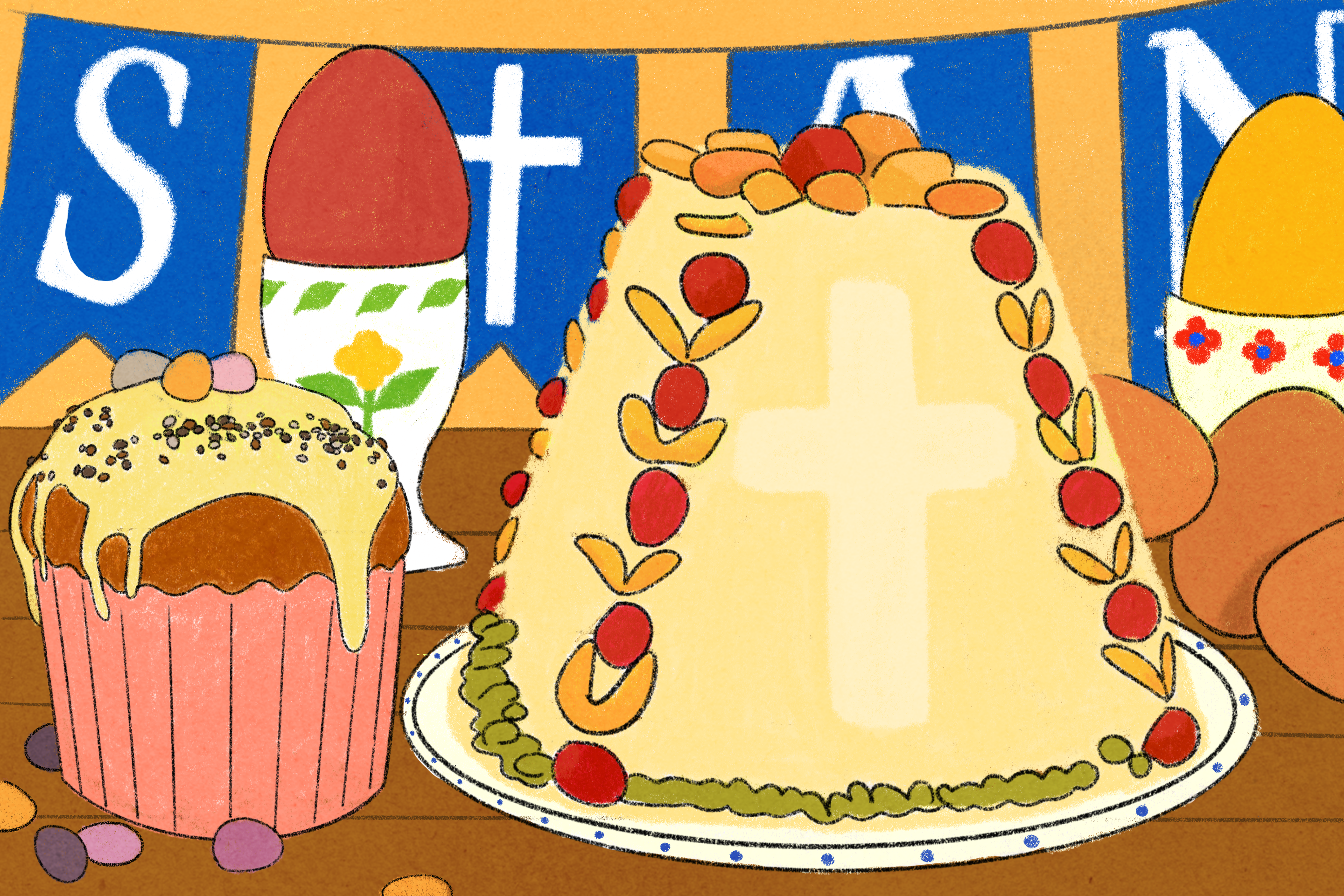Interested in widening your understanding of the less popular Orthodox Easter? Reading about traditional foods is a great way to learn!
While Catholic Easter traditions are common practice in America, the traditions of Orthodox Easter are not as widely known. Not only are the spiritual practices and beliefs very different, but so are the food customs.
Orthodox Easter is the most important holiday in the Christian Orthodox faith, while Christmas is the biggest holiday in the Catholic tradition. Orthodox Easter follows the Gregorian calendar and must occur after the Jewish festival of Passover, because the New Testament explains that Jesus was crucified after Passover, which is why it’s often after Catholic Easter. Though Orthodox Easter is commonly referred to as Greek Easter, many other countries such as Russia, Bulgaria and others celebrate the holiday as well. Orthodox Christianity is a common religion in Eastern Europe that is not limited to Greece or Greek-speaking areas. Even some countries in Africa like Ethiopia and Egypt are majority Orthodox Christians.
In Orthodox tradition, followers are expected to fast for 40 days, starting on Clean Monday and ending on Lazarus Saturday, which is eight days before Easter Sunday. The tradition of fasting can be linked to Saint Basil the Great, who claimed “if you want to strengthen your mind, you need to tame your flesh with fasting.” Fasting is an exercise of self- control and lending control to God. In celebration of great restraint and Jesus, Orthodox Easter is a special day full of feasting and a variety of desserts.
One of the most famous Slavic desserts for Orthodox Easter is a bread called Kulich. This dessert is a tall cake containing raisins and topped with a sweet sugar icing and colorful sprinkles. Though its flavor is simple, the cake is dense and filling. Similar to a less-sweet yellow cake with the consistency of bread, Kulich is an iconic Orthodox Easter dessert.
Pashka is another delicious dessert enjoyed on Easter . This dessert is creamy and rich, very similar to cheesecake but with zest. Everyone has their own variation of Pashka, but common ingredients include cream cheese, nuts, dried or candied fruits, and honey. Since dairy products are forbidden during fasting, the dessert of Pashka is an exciting and popular delicacy for followers to look forward to. Pashka is sometimes blessed during the Saturday service right before Easter Sunday because it represents the resurrection.
A more subtly sweet dessert on Easter is Makovnik or poppy seed roll. Makovnik is a rolled bread with a thick, sweet paste filling consisting of poppy seeds. Sometimes nuts like chestnuts or walnuts are substituted for the filling or combined with the poppy seeds. This dessert pairs great with a hot cup of coffee or tea.
Finally, the tradition of dyeing eggs differs in Orthodox tradition. It’s common and traditional to use natural sources for dye, such as beet juice or onion skins, opposed to the dye tablets that often come in egg dye kits in the United States. Though these colors aren’t as bright and poppy as Western dyed eggs, they are deep, rich and beautiful.
Slavic eggs are also commonly decorated with traditional patterns. The tiny, detailed ornamentation is a careful process that can take a very long time, depending on how many eggs are being dyed. Orthodox easter eggs are often placed in baskets and around other food spreads as decoration. Another tradition involving eggs is a game where children roll their eggs down a hill, seeing whose cracks first. Alternatively, children just clink their eggs against each other’s and whoever cracks first is the loser.
The week leading to May 5th, try visiting a Slavic or Greek bakery and pick up one of these delicious desserts. You may learn more about Orthodox Easter practices while enjoying a tasty treat.

















